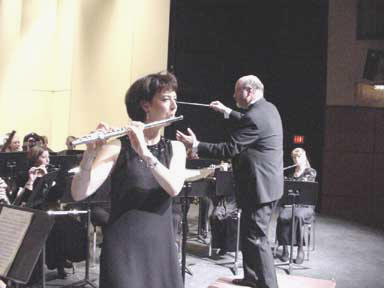|
Intonation Tendencies
of Wind Instruments |
Oboe Bassoon Clarinet Saxophone Brass & Percussion
-
Head joint pulled out = flatter, pushed in = sharper
-
Temperature: cold = flat, hot = sharp
-
Extreme range: GENERALLY high = sharp, low = flat
-
Dynamic level: loud = sharp, soft = flat (big danger on releases)
-
More than any other factor, air direction affects intonation. A raised air stream will raise pitch, and a lowered air stream will lower pitch. Jaw movement (embouchure manipulation) should be used to control pitch, but it can be done by raising or lowering the head.
Never teach "roll in/roll out." The contact point of the flute to the lip should not be disturbed, nor should the hands be encumbered with unnecessary movement. The crown assembly in the head joint of the flute must be set at the proper place for good intonation. Cleaning/tuning rods have a mark on them which should appear in the center of the blow hole when the rod is inserted into the head joint. Students should be warned against moving the crown of the flute.

| If you would like to be added to the TSMP Email Mailing List and receive periodic notifications of new articles and updates to this website, then please email TSMP.
The Texas School Music
Project is a source for ideas and information
concerning pedagogical
practices in the music classroom or rehearsal hall. The TSMP is a service provided to
all music specialists by the faculty
of
the Department of Music
at Stephen F. Austin State University. Copyright © 2002, Department of Music at Stephen F. Austin State University |
